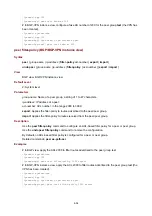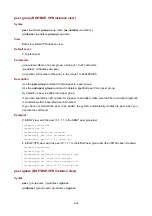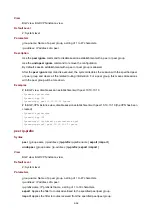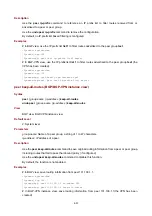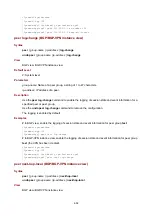
6-68
local-preference
: Preference of local routes, in the range 1 to 255.
route-policy-name
: Routing policy name, a string of 1 to 19 characters. Using the routing policy can set
a preference for routes matching it. The default value applies to routes not matching the routing policy.
Description
Use the
preference
command to configure preferences for external, internal, and local BGP routes.
Use the
undo preference
command to restore the default.
The greater the value, the lower the preference.
The default values of
external-preference
,
internal-preference,
and
local-preference
are 255, 255, 130
respectively.
Examples
# In BGP view, configure preferences for EBGP, IBGP and local routes as 20, 20 and 200.
<Sysname> system-view
[Sysname] bgp 100
[Sysname-bgp] preference 20 20 200
# In BGP-VPN instance view, configure preferences for EBGP, IBGP and local routes as 20, 20 and
200 (the VPN has been created).
<Sysname> system-view
[Sysname] bgp 100
[Sysname-bgp] ipv4-family vpn-instance vpn1
[Sysname-bgp-vpn1] preference 20 20 200
reflect between-clients (BGP view)
Syntax
reflect between-clients
undo reflect between-clients
View
BGP view
Default Level
2: System level
Parameters
None
Description
Use the
reflect between-clients
command to enable route reflection between clients.
Use the
undo reflect between-clients
command to disable this function.
By default, route reflection between clients is enabled.
After a route reflector is configured, it reflects the routes of a client to other clients. If the clients of a
route reflector are fully meshed, you need disable route reflection between clients to reduce routing
costs.
Related commands:
reflector cluster-id
and
peer reflect-client
.

